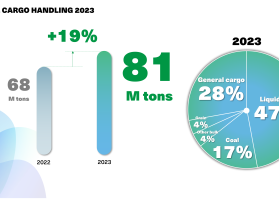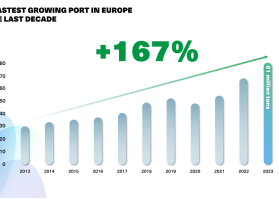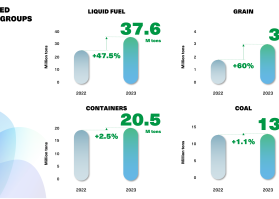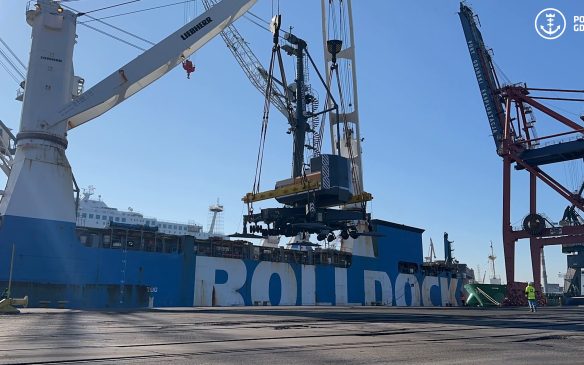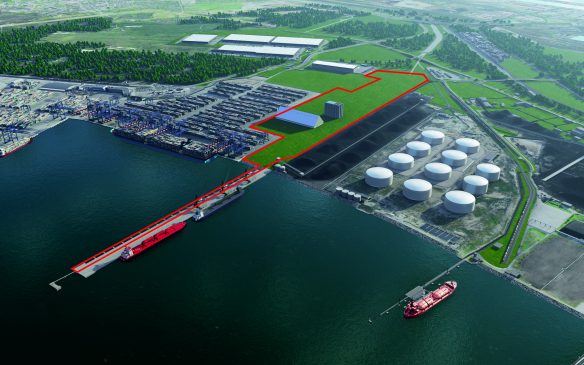Liquid fuels contribute to record-breaking cargo handling at the Port of Gdańsk
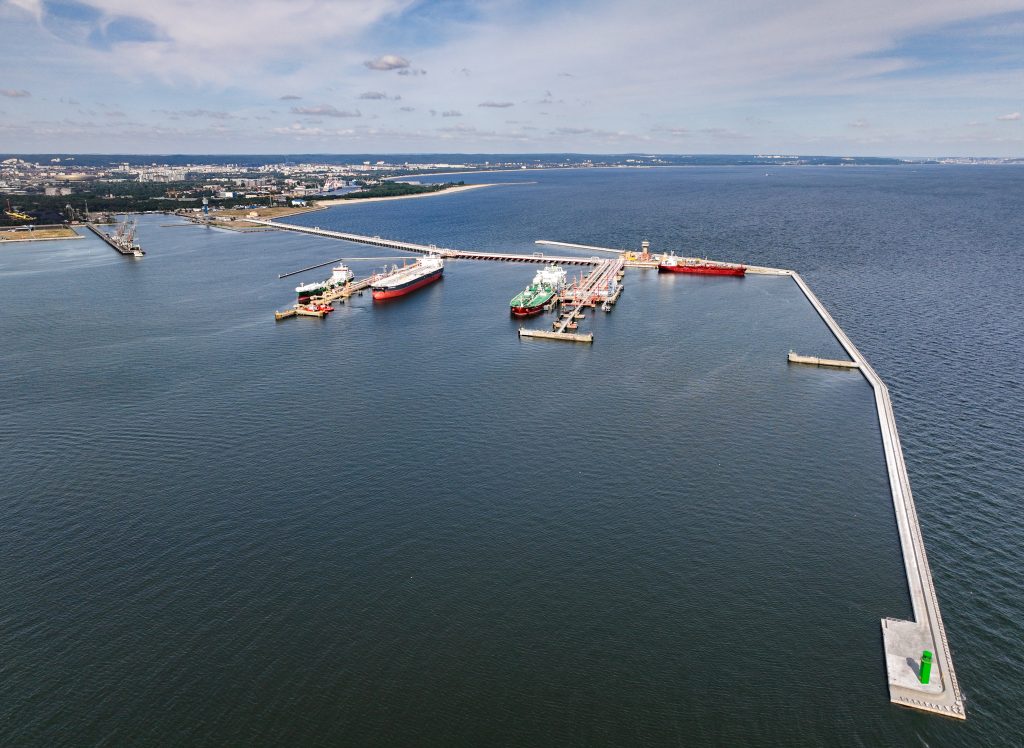
Dynamic development at the Port of Gdańsk and the successive increase in cargo handling have been observed for several years. However, there was a huge spike last year due to the geopolitical situation. Poland’s largest port has achieved another cargo handling milestone, at close to 81 million tonnes, an increase of more than 12.7 million tonnes compared to 2022.
Agro goods recorded the highest percentage increases, at 60%. The grain terminals operated at full capacity throughout the year, a fact directly related to the blockade of Ukrainian ports on the Black Sea and the transit of Ukrainian grain through Polish ports. In total, cargo handling of grain at the Port of Gdańsk during the year amounted to almost 3.1 million tonnes, which a year earlier was approximately 2 million tonnes.
Liquid fuels had the biggest impact on the port’s overall result. They rose by 47%, which means the handling of 37.6 million tonnes instead of the 25.5 million tonnes in 2022. Naftoport has become an oil hub for the region, with the Gdańsk fuel terminal securing the refining needs of both Poland and our closest neighbours. Naftoport has handled a total of 36.6 million tonnes of crude oil and fuels over the last year, with part of this cargo being deliveries to German refineries. After supplies were cut off through the Druzhba oil pipeline from Russia, Poland has become the most important gateway for them.
As far as other power resources coming through the Port of Gdańsk to Poland are concerned, there have been no such spectacular increases over 2022. This is because the market needs have been stabilised. Coal imports at the Port of Gdańsk remain at a level similar to the previous year. Coal terminals handled 13.3 million tonnes, of which 12.5 million tonnes was imported. This represents an increase of 1% compared to 2022.
The same is true of general cargo handling, which reached 22.9 million tonnes and represents a slight correction. Container terminals recorded an increase of 2.5%, meaning cargo handling of nearly 20.5 million tonnes. There is also little difference in the other bulk group, with 3.5 million tonnes, down by 0.9 per cent.
‘As you can see, we know how to make the most of our access to the sea. I trust that the Port of Gdańsk in the next few years will exceed 100 million tonnes in cargo handling and become a leader on the Baltic Sea, not only in terms of containers. I hope that the port will be able to compete on an equal footing with the top European ports,’ says Łukasz Malinowski, President of the Port of Gdańsk.
Record cargo handling means record financial results. ZMPG S.A. recorded a net profit of PLN 224.4 million in 2023. For comparison, in 2021 the profit was less than a third of this, amounting to PLN 65 million.
Such good results would not have achieved if it had not prioritised the development of the port infrastructure. Since 2018, ZMPG S.A. has spent nearly PLN 1.3 billion on investments and renovations, including PLN 824 million on projects co-financed by EU CEF funds.
‘With EU support, we have widened and deepened the fairway, rebuilt 5 km of quays and improved the navigation conditions in the inner port. As a result, larger ships can now enter this part of the port. In 2021 we completed, at a cost of PLN 167 million, the expansion and upgrade of the road and rail network in the inner port, involving the creation of 7 km of roads, 10 km of tracks and 4 new viaducts. The expansion of the industrial quay area, which was completed at the end of last year, cost over PLN 82 million. This undertaking has significantly improved communication on the land side as well as improving cargo handling. In addition, this will allow the commercialisation of new investment areas. In 2023, as part of CEF 2, we received nearly EUR 100 million in subsidies for the expansion of four more inner port quays, with a total length of nearly 2 km, together with the associated railway infrastructure. The planned investment period is 2023–2027,’ says Kamil Tarczewski, Vice-President of the Port of Gdańsk.
The investments are essential for the port’s business. They increase the competitiveness of the port and its share in cargo handling. Thanks to them, the Port of Gdańsk has become the fastest growing European port over the last decade, with a growth rate of 167%.

